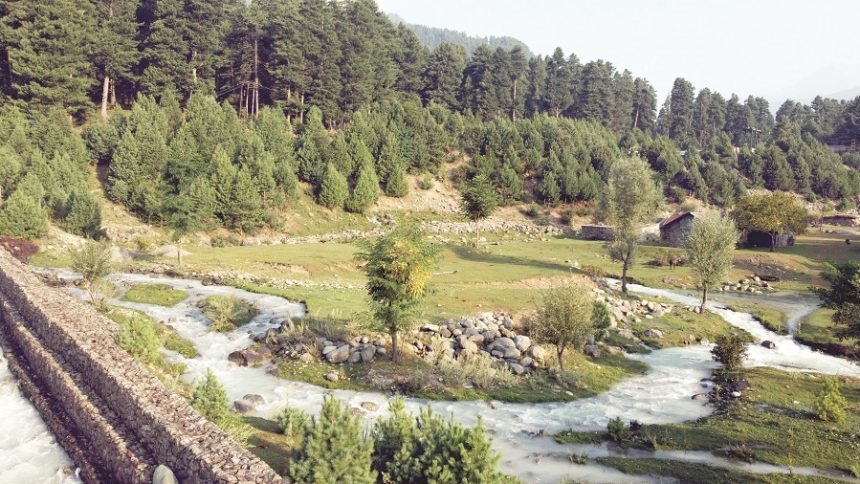Known for its captivating landscapes and serene beauty, Kashmir, often referred to as “Paradise on Earth” is facing an unprecedented rise in temperatures. A haven of picturesque valleys, snow-capped mountains, and lush meadows, Kashmir valley is experiencing significant environmental shifts that could alter its landscape and way of life forever.
Over the past few decades, there has been a noticeable increase in average temperatures in Kashmir. According to a study by the Indian Meteorological Department, the average temperature in the region has risen by approximately 1.2 degrees Celsius over the last century. While this might seem minimal, even small changes in temperature can have profound effects on the environment and the people who depend on it.
One of the most visible impacts of rising temperatures in Kashmir is the accelerated melting of glaciers. Glaciers in the Himalayas, which provide vital water sources for rivers and agriculture in the region, are retreating at an alarming rate. According to the environmental experts, the Kolahoi Glacier, the largest in Kashmir, has been shrinking steadily, threatening water supplies for millions.
The changing climate has also disrupted traditional weather patterns, leading to unpredictable and extreme weather conditions. Kashmir has witnessed a series of devastating floods over the past decade, most notably in 2014, when the region experienced its worst flooding in over a century. The floods caused widespread destruction, displacing thousands and causing significant economic losses. Experts attribute these extreme weather events to climate change, which has intensified the frequency and severity of such occurrences.
Agriculture, which is the backbone of Kashmir’s economy, is vulnerable to climate change. Erratic weather conditions are posing a threat to Kashmir’s agri – allied sector. Off-late farmers are reporting changes in flowering and harvesting times, reduced crop yields, and increased pest infestations.
The impact on agriculture extends to Kashmir’s renowned apple industry as well. Apples, which require specific climatic conditions to thrive, are facing challenges due to warmer temperatures and changing rainfall patterns. Horticulturists are concerned that if these trends continue, it could severely affect apple production, which is a major source of income for many families in the region.
Moreover, the prevalent weather conditions have posed a challenge to Kashmir’s diverse flora and fauna as habitats change and temperatures rise.
The prevailing depressing situation calls for government and environmental organizations’ initiatives to mitigate the impact of climate change in Kashmir. Afforestation programs, promotion of sustainable agricultural practices, and awareness campaigns are some of the initiatives being implemented.
Such steps are crucial in combating climate change and its effects. Kashmir’s environmental stability has global implications. The melting of glaciers in this region contributes to rising sea levels, affecting coastal communities worldwide.
Education and awareness would play a vital role in the fight against climate change. The people of Kashmir, especially the younger generation, need to be informed about the consequences of climate change and the importance of sustainable living.
The rising temperatures and climate changes in Kashmir present a formidable challenge that requires immediate and sustained action. By combining local efforts with global initiatives, there is hope that Kashmir can adapt to and mitigate the effects of climate change, preserving its natural heritage for future generations.








